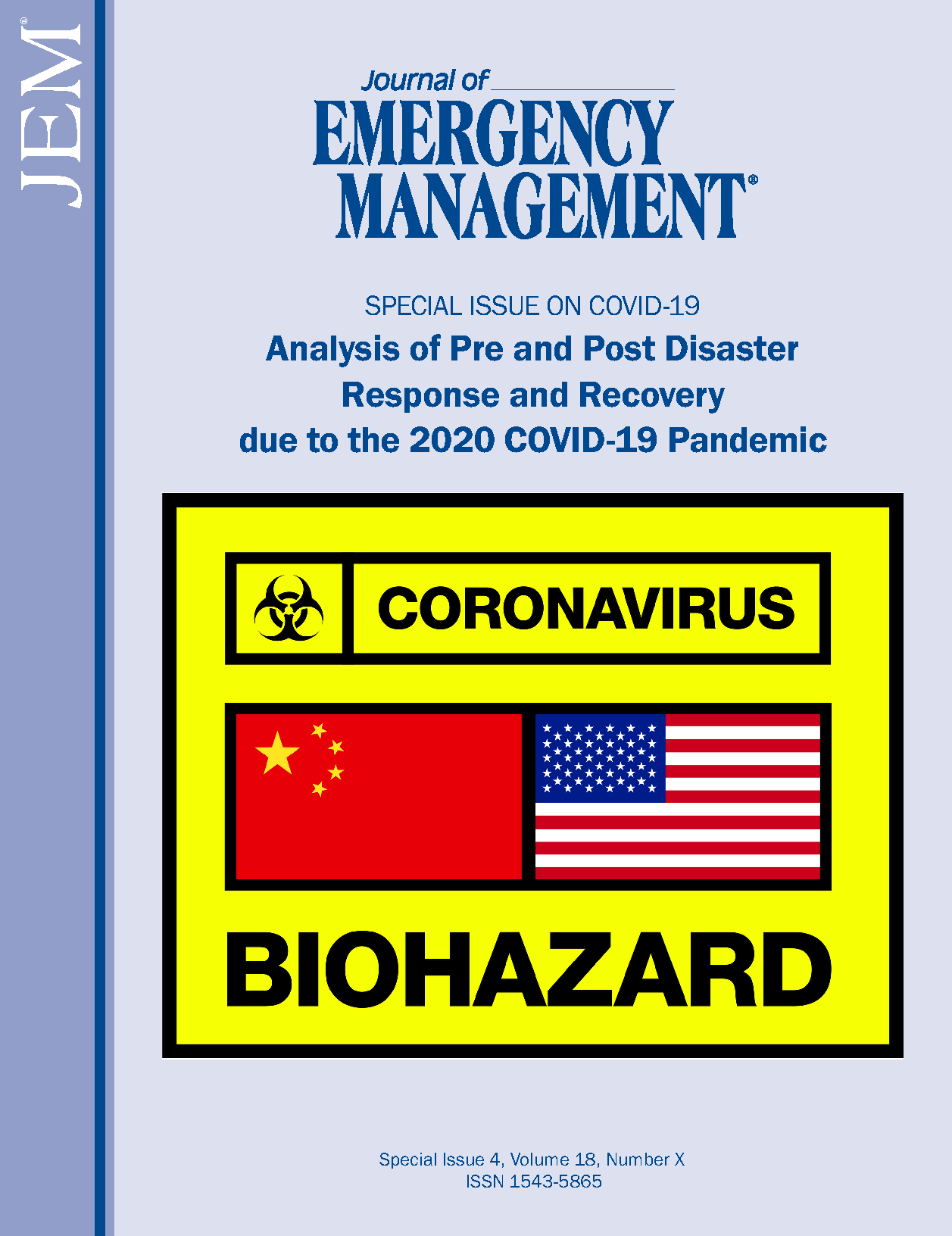Sheltering and quarantine measures for risks that threaten the village of Umm al-Nasr, Gaza Strip
DOI:
https://doi.org/10.5055/jem.0522Keywords:
COVID-19, disaster, mathematical model, Umm al-Nasr, responseAbstract
This study aimed to analyze the risks that affect the Umm al-Nasr village (north of Gaza Strip), which include wars, floods, and the Corona virus disease-19 (COVID-19) pandemic, which may require the emergency committee to identify places for sanitary isolation in the case of infection or provide shelters in the disasters such as wars and floods. A plan that contains procedures for managing the displacement of the citizens according to the type of the disaster and the suggested safe shelters were prepared. Individuals infected with COVID-19 are isolated in central places or their home.
Responding procedures for the emergency committee in Umm al-Nasr municipality were prepared to deal with displaced people. A mathematical model was designed to simulate choosing a shelter for the citizens of this village depending on the type of crisis. The results showed the different conditions that may affect the displacement operation, such as the type of shelter, the allocated area, the number of displaced citizens, the type of disaster, and the required speed to reach the shelter.
This study recommended advancing the capabilities of the community to confront risks and COVID- 19. Besides, perfect planning plays a significant role in saving lives, time, and effort. Therefore, it is needed to cooperate with the local authorities, such as municipalities, ministry of health, civil defense, and international institutions to implement a response action during disasters, and the necessity of closing residential areas and isolating them if new cases of COVID-19 appear.
References
Campos V, Bandeira R, Bandeira A: A method for evacuation route planning in disaster situations. Procedia-Soc Behav Sci. 2012; 54: 503-512.
Bramante JF, Raju DK: Predicting the distribution of informal camps established by the displaced after a catastrophic disaster, Port-au-Prince, Haiti. Appl Geogr. 2013; 40: 30-39.
Kongsomsaksakul S, Yang C, Chen A: Shelter location-allocation model for flood evacuation planning. J Eastern Asia Soc Transp Stud. 2005; 6: 4237-4252.
Kılcı F, Kara BY, Bozkaya B: Locating temporary shelter areas after an earthquake: A case for Turkey. Eur J Oper Res. 2015; 243(1): 323-332.
Saadatseresht M, Mansourian A, Taleai M: Evacuation planning using multiobjective evolutionary optimization approach. Eur J Oper Res. 2009; 198(1): 305-314.
Ashmore J, Babister E, Corsellis T, et al.: Diversity and adaptation of shelters in transitional settlements for IDPs in Afghanistan. Disasters. 2003; 27(4): 273-287.
Omri AD: The concept of prefabricated units and their applications in the reconstruction process. Tishreen Univ J Res Sci Stud Eng Sci Ser. 2015; 37: 4.
Dabaieh M, Alwall, J: Building now and building back. Refugees at the centre of an occupant driven design and construction process. Sustainable Cities Soc. 2018; 37: 619-627.
Zhu Y, Wang C, Dong L, et al.: Home quarantine or centralized quarantine, which is more conducive to fighting COVID-19 pandemic? Brain Behav Immun. 2000; 87: 142–143.
Palestinian Ministry of Health. Coronavirus-COVID19 Surveillance System. Available at http://site.moh.ps/index/covid19/LanguageVersion/0/Language/ar. Accessed June 25, 2020.
Goerlandt F, Reniers G: On the assessment of uncertainty in risk diagrams. Saf. Sci. 2016; 84: 67-77.
Musalam A, Abu-habib A, Salah, M: Emergency Management requirements to overcome the crises of Umm al-Nasr. An-Najah J. 2019; 33(3): 463-494.
Zhao X, Xu W, Ma Y, et al.: Scenario-based multi-objective opti-mum allocation model for earthquake emergency shelters using a modified particle swarm optimization algorithm: A case study in Chaoyang District, Beijing, China. PLoS One, 2015; 10(12): e0144455.
Alia, I.: Study the techniques used in the housing units of the best performance in Syria. Al-Baath Univ J. 2016; 83: 47.
UNRWA: Gaza Situation Report 94. Available at https://www.unrwa.org/newsroom/emergency-reports/gaza-situation-report-94, 2015. Accessed June 25, 2020.
Ministry of Health: Daily Report for COVID 19 Virus. Available at http://www.moh.gov.ps/portal/wp-content/uploads/2020/06/Corona-English-22-6-2020.pdf. Accessed June 25, 2020.
Published
How to Cite
Issue
Section
License
Copyright 2007-2025, Weston Medical Publishing, LLC and Journal of Emergency Management. All Rights Reserved.






